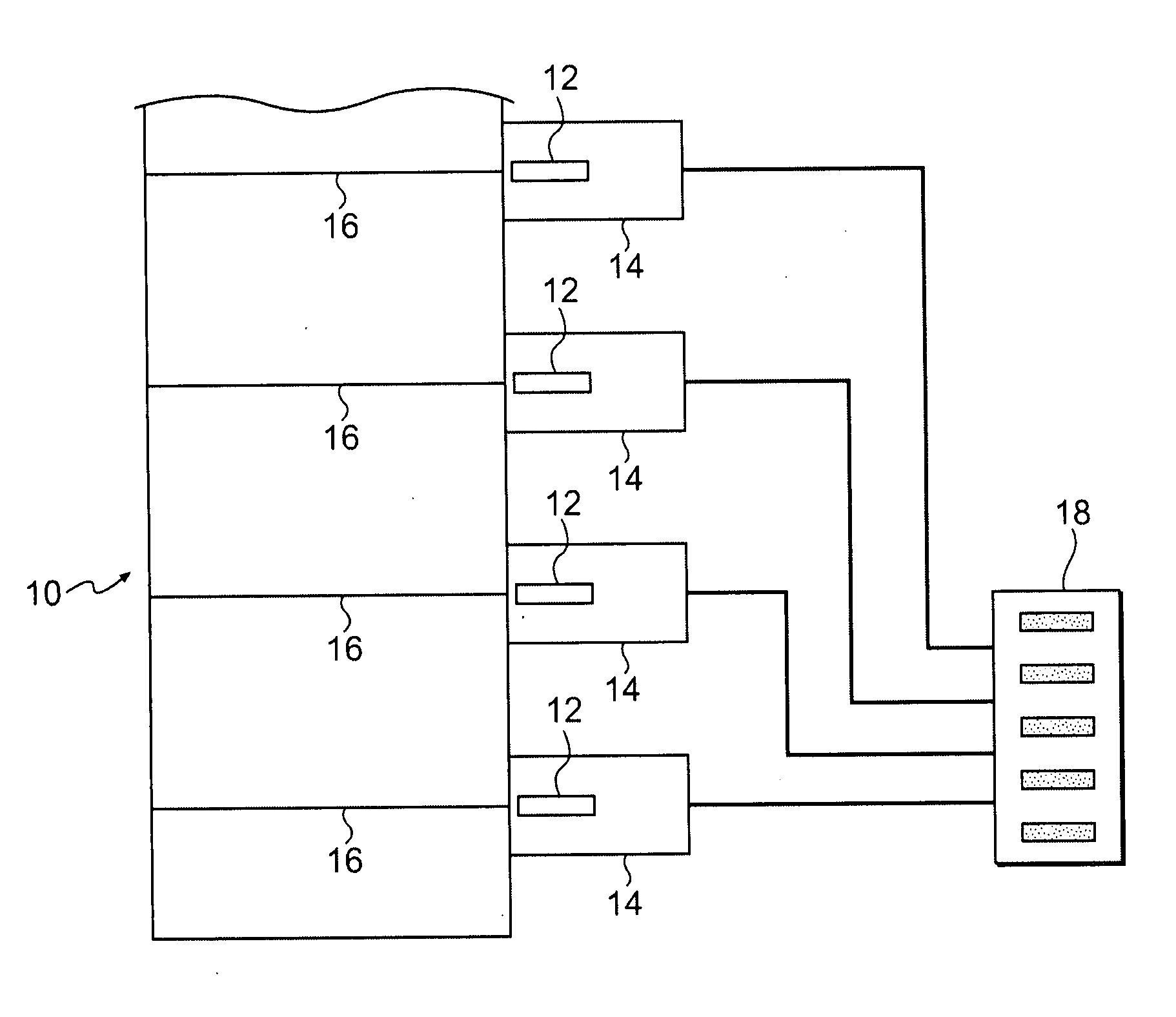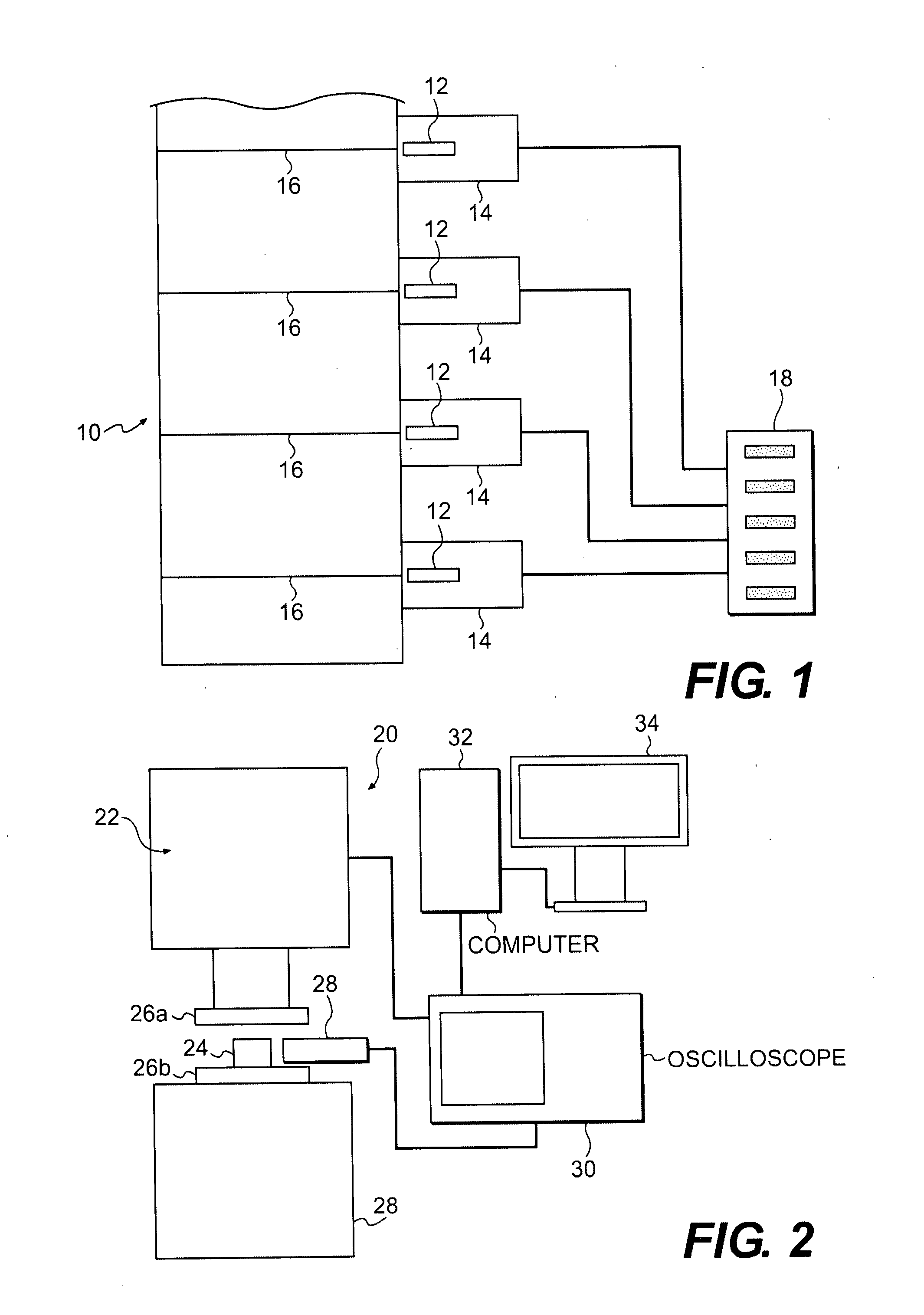Material failure prediction/stress/strain detection method and system using deformation luminescence
a technology of deformation luminescence and material failure, applied in the field of material failure prediction/stress/strain detection method and system using deformation luminescence, can solve the problems of inability of scientists to accurately detect structural stress, systematic fatigue is nearly impossible to detect, and ineffective techniques, in general, to achieve the effect of improving the indication of material fatigue and assessing the overall health of the material
- Summary
- Abstract
- Description
- Claims
- Application Information
AI Technical Summary
Benefits of technology
Problems solved by technology
Method used
Image
Examples
Embodiment Construction
[0042]Referring to FIG. 1, there is shown a highly schematic representation of a structure 10 that is being monitored. As illustrated, a series of sensors 12, which, in one preferred embodiment, comprise conventional photomultiplier tubes (PMTs), are placed at vital areas of the structure 10, i.e., at areas, indicated at 16, where stress is most likely. It will be appreciated that while the following description makes reference to photomultiplier tubes (PMTs) other photon detectors / counters can also be used. The sensors (PMTs) 12 are housed in lightproof housings 14 so that outside light does not interfere with the measurements made by the sensors (PMTs) 12.
[0043]The outputs of each of the sensors (PMTs) 12 are connected to, or the output data from each is otherwise communicated to, a control center 18 at which technicians and / or computer programs analyze the output data to detect material fatigue and / or predict material failure. This analysis is discussed in more detail below.
[0044...
PUM
| Property | Measurement | Unit |
|---|---|---|
| stress | aaaaa | aaaaa |
| structural stress | aaaaa | aaaaa |
| Strength | aaaaa | aaaaa |
Abstract
Description
Claims
Application Information
 Login to View More
Login to View More - R&D
- Intellectual Property
- Life Sciences
- Materials
- Tech Scout
- Unparalleled Data Quality
- Higher Quality Content
- 60% Fewer Hallucinations
Browse by: Latest US Patents, China's latest patents, Technical Efficacy Thesaurus, Application Domain, Technology Topic, Popular Technical Reports.
© 2025 PatSnap. All rights reserved.Legal|Privacy policy|Modern Slavery Act Transparency Statement|Sitemap|About US| Contact US: help@patsnap.com



